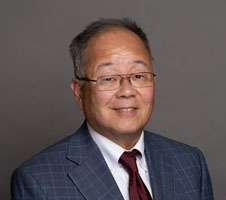
CIPS CONNECTIONS
Podcast/Video Interviews by Stephen IbarakiA Chat with Keith Terasaki, M.D: Interventional radiologist, past chief of radiology Kaiser Hospital LA Medical Center; Chairman of Board Terasaki Foundation; Chairman Board Terasaki Institute for Biomedical Innovation; Chairman Board Wesley Health Clinics; Board member Colburn School of Music, Metropolitan YMCA, UCLA Life Sciences -- about developing life-changing products in precision / personalized health, nutrition, and medicine leveraging translational interdisciplinary research leveraging transformational innovation in biomedical engineering, computing science, life sciences and more; serving diversity, equity, inclusion, accessibility, fundamental education for all.
This week, Stephen Ibaraki has an exclusive interview with Keith Terasaki, M.D.
 I was born in Los Angeles, California. I attended UCLA for undergraduate and medical school. I became an interventional radiologist, after completing a fellowship at Stanford University. I have worked at the Kaiser Los Angeles Medical Center for over 25 years, where I was chief of the radiology department from 2003 to 2013.
I was born in Los Angeles, California. I attended UCLA for undergraduate and medical school. I became an interventional radiologist, after completing a fellowship at Stanford University. I have worked at the Kaiser Los Angeles Medical Center for over 25 years, where I was chief of the radiology department from 2003 to 2013.
My father, the late Paul Terasaki, was a medical researcher at UCLA. He performed a lot of the groundbreaking basic science work in organ transplantation over a 50 year career. He started the Terasaki Research Institute, where he continued research in organ transplantation. This is a non-profit research institute, located in Los Angeles, now with around 50 researchers.
After he passed away, we hired a new CEO at the Institute, Dr. Ali Khademhousseini. Under his leadership, the Institute has focused on innovation, trying to develop life-changing products in health and medicine.
One example of a product being developed at our institute is a test on cancer cells that can predict how well different chemotherapy agents will kill the tumor cells. This procedure is now being tested in multiple medical centers, and hopefully in the future will change how chemotherapy agents are chosen for patients.
Another example we are currently working on is growing cultured meat. We start with a muscle biopsy of a cattle, and then grow it in culture to make a hamburger. Right now, we can grow 200 liters of meat in an incubator tank in one week. We are working on scaling up our operations.
There are two potential huge benefits to our project. If we can grow enough cultured meat, and get people to consume it rather than regular meat, we can decrease the world need for agricultural space. We hope to see less farmlands, less water usage, less methane production, less pesticides and less slaughtering of cattle for food. This could lead to improved climate control. There are also huge potential health advantages of cultured meat. Someone can eat a hamburger made of pure myocytes, with little of the grease, saturated fat or cholesterol.
We have many other research projects going on at our institute, such as in stem cell research, organs on a chip, wearable sensors, biological implants, and vaccines that donít need refrigeration. Our family foundation funds approximately half of the research performed at the Institute. For our family, it has been gratifying and exciting to see what can be done.
I live in Los Angeles, with my wife of 30 years, Cecilia. We have two grown children. Our family also actively supports non-profit organizations involved with medical care for the homeless, climate change research, and education of the underserved.